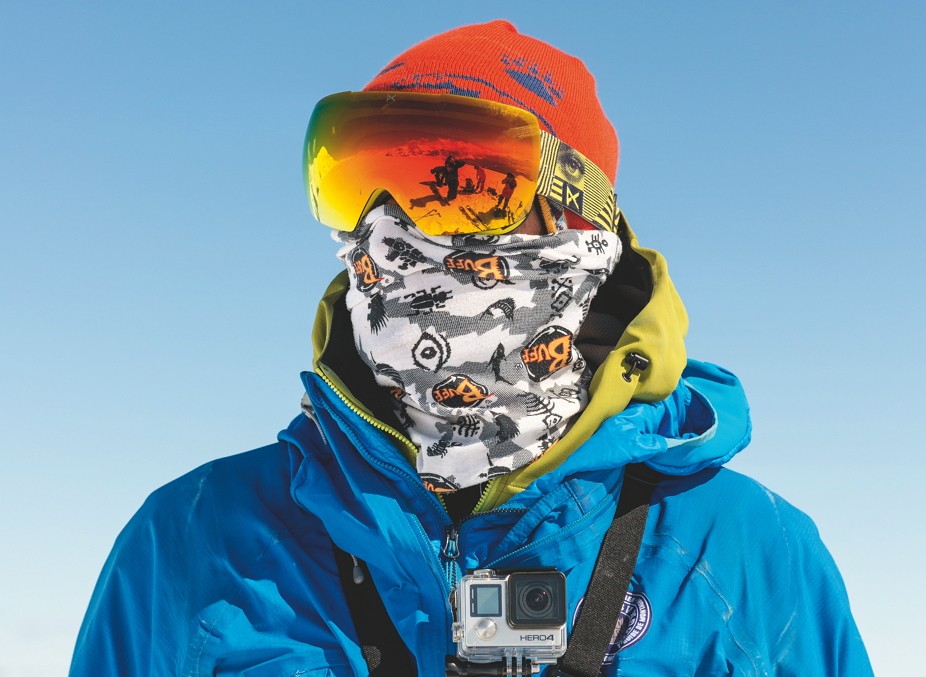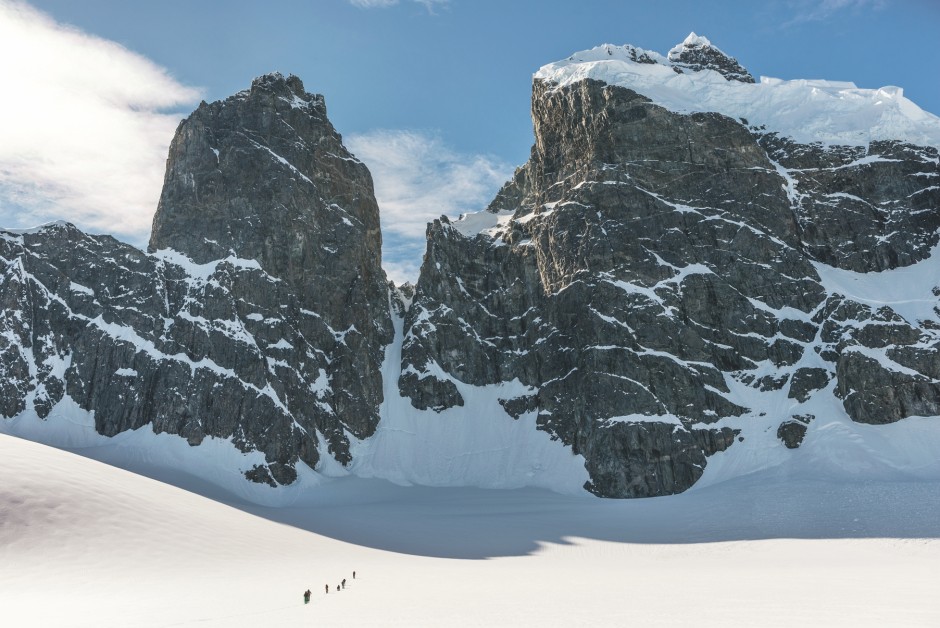“Wild, just wild,” I hear Brummer behind me, commenting with his American Midwest drawl on our icy surroundings rippled with crevasses, granitic peaks piercing the blue sky.
“Last week I was literally peeling the price tags off my gear as I was packing for this trip,” says Brummer, who is new to backcountry boarding. And though you needn’t be an extreme athlete to do it, a mountain ascent on skis, without the advantage of chairlift, helicopter or snowcat, requires a high level of fitness and endurance – something I try not to think about as I follow the track meditatively.
As the glacier steepens and crevasses complicate the route ahead, the guides divide us into two rope teams for protection, just in case a snow bridge suddenly collapses. The sun burns intensely, so I pull a bandana over my face, leaving a slit for sunglasses. We carry on tethered together by a 0.35-inch climbing rope, conversation replaced by labored breathing.
It takes three hours to climb and weave around crevasses that could swallow a bus, and now we are on the gentle summit slopes. Suddenly there’s a loud echoing rumble, like thunder. My gaze is drawn to the bay and I spot an apartment-block-sized iceberg splitting in two. One half disintegrates into thousands of fragments; the other stays intact, rolling over to assume new stasis.
Though climate change seems implausible in such a frozen world, research indicates that the ice shelf before us that once extended hundreds of miles from the continent into the sea is in rapid retreat. Dramatic disintegrations of the polar ice, like the one we just witnessed, tell the story of modern Antarctica.
Ten minutes later we’re basking at the summit, chomping for turns. We peel off climbing skins, while drinking water, munching chocolate and reapplying sun block. Pilkington leads off, instructing us to stay left of his tracks to avoid a tangle of seracs, blocks of unstable ice formed where a glacier flows over a convexity in the bedrock beneath.
The clear visibility and bonus springtime fresh snow make for dreamy skiing. I carve fast swooping turns in the boot-deep powder – feathery snow crystals sparkling in clear air – and aim for where Pilkington waits. Brummer sets off, using poles for balance and exhibiting the utilitarian style expected of a snowboarder rooted in the flatlands of rural Illinois.
Sixteen-hundred vertical feet below us in the bay, the Zodiac leaves the ship bound for our scheduled pickup. From our lofty vantage, the Akademik Ioffe looks like a miniature and, I must admit, reassuring beacon of civilization in this vast landscape. We have time for another lap on the upper slopes, and so in 15 minutes are back at the top staring down at untracked snow. On the day’s last descent, our guides pause only to regroup and thread carefully among crevasses before the final slope drops us back onto the glacier’s terminus.









